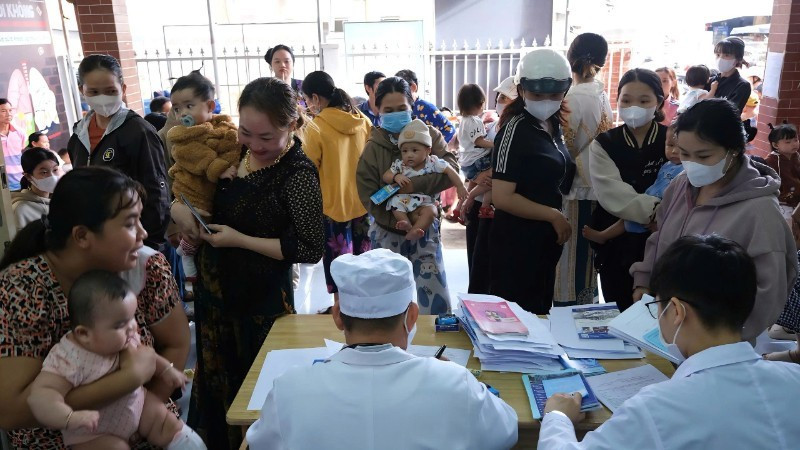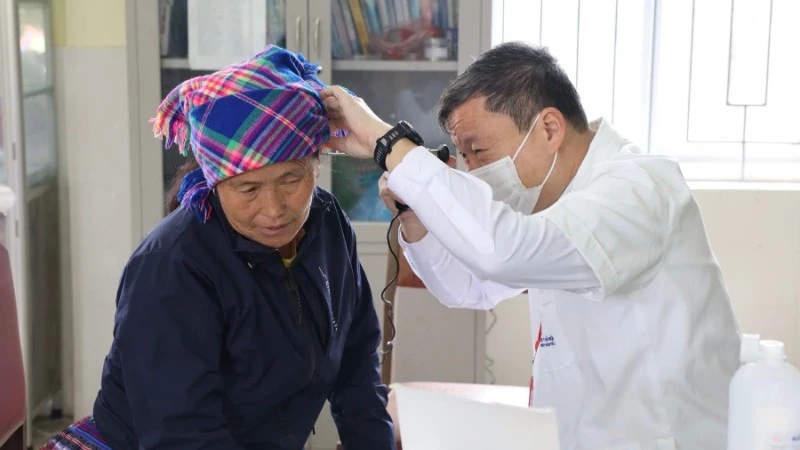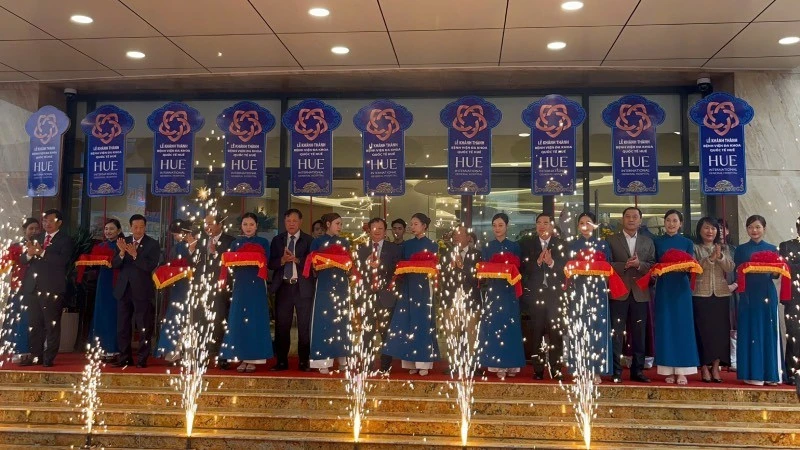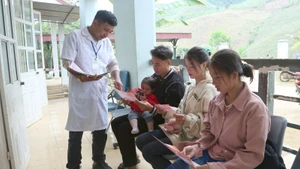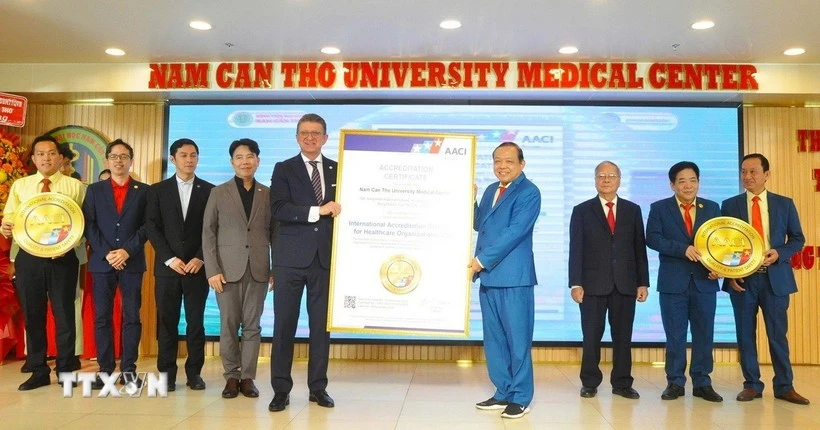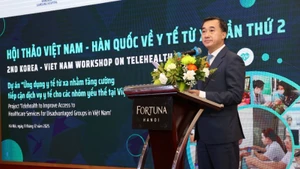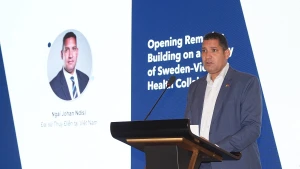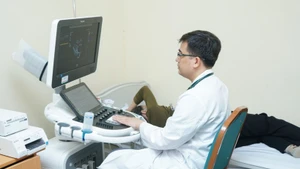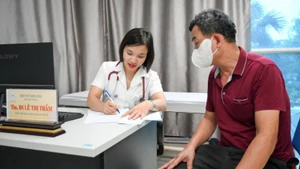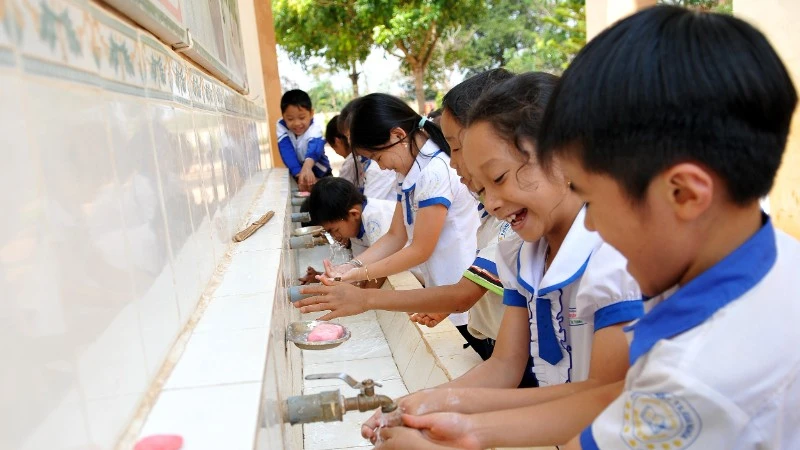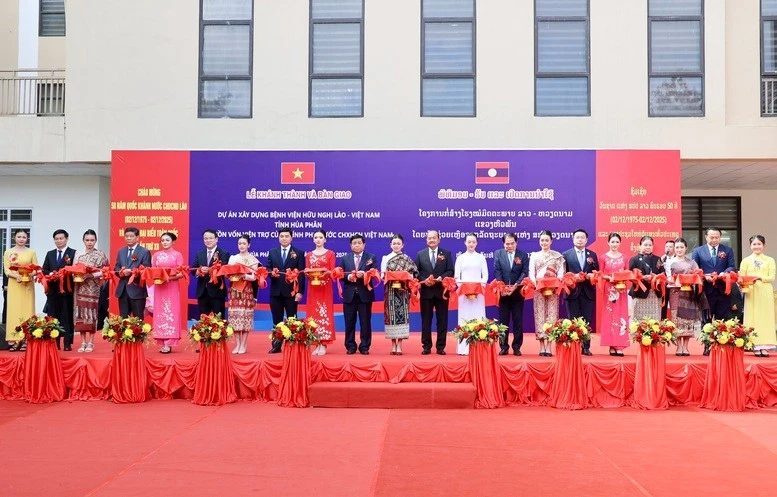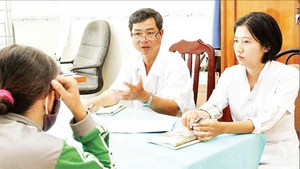As commune and ward health stations are gradually being standardised in terms of infrastructure, human resources, and equipment, the city is working towards building a comprehensive and modern primary healthcare system that serves people more conveniently and effectively.
Since the merger, Can Tho’s health sector has worked to standardise the network of health stations, reallocated staff, transferred equipment, and updated population-health data by locality. The city currently has 103 commune and ward clinics. Each station has one main centre and a number of satellite sites.
Step-by-step standardisation
At present, the healthcare network in Can Tho – from primary facilities to city-level hospitals – is being expanded and strengthened. Many centres are operating effectively, attracting a high number of patients. Service quality has improved thanks to investment in equipment and a team of qualified and dedicated medical staff.
In some inner-city health stations, facilities are spacious and equipped with modern machinery. Healthcare centres in more remote areas have also received investment. The Co Do Commune health station, for example, has many university-trained doctors, laboratory technicians, X-ray technicians and pharmacists. Its biochemical testing systems, blood analysers, ultrasound machines, and other equipment can adequately meet local healthcare needs.
Nguyen Thi Sau, a resident of Co Do Commune, said: “In the past, when I was ill I usually went to hospitals in the city centre or to private clinics. Recently, as the local health station has been equipped with more machines and staffed by skilled doctors, I have been visiting it more often. For common illnesses, treatment at the health station is very effective.”
The city has also opened eight family doctor clinics, enhancing the quality of comprehensive and continuous primary care. These clinics regularly cooperate with higher-level hospitals on professional matters.
According to Dr Ly Hong Khiem, Head of the Planning and Finance Division of Can Tho Department of Health, since 2018 the department has worked with Can Tho University of Medicine and Pharmacy to organise basic family medicine training courses for doctors at health stations and medical centres. A total of 106 general practitioners have undertaken supplementary training in family medicine.
According to leaders of several healthcare facilities, the increasing number of patients not only boosts staff morale but also helps improve income for medical workers, while reflecting people’s growing trust in the sector.
Dr Truong Ty, Director of Cai Rang Regional Medical Centre, said the facility was formed from the merger of Cai Rang District Medical Centre and Phong Dien District Medical Centre. It now manages five clinics and seven satellite sites. The centre receives about 700 to over 1,000 outpatients per day and 40 to 60 inpatients.
Following the merger, extra doctors and medical staff from the two centres were reassigned to primary facilities. Many of them are highly qualified, which has helped raise the quality of staff at health stations.
Further investment needed
Despite encouraging results, the city still faces numerous challenges in developing primary healthcare.
Hoang Quoc Cuong, Director of Can Tho Department of Health, noted that many centres are deteriorating. Some clinics need to be rebuilt, upgraded, or renovated.
Others lack essential equipment such as CT scanners, specialised cardiac ultrasound machines, and dialysis units. Information technology infrastructure at the grassroots level remains basic. Medical centres also face difficulties in implementing financial autonomy, especially those with only preventive functions.
It has been observed that even some health stations in central areas of the city still lack equipment.
“The whole facility has only a few computers. Staffing is also inadequate because densely populated areas need more medical workers. To attract patients, a health station must have skilled doctors, nurses, and midwives. In addition, there should be well-trained laboratory technicians and pharmacists to manage medicines,” said the head of a health station in Binh Thuy.
Some stations are still struggling to adopt digital transformation, particularly in implementing electronic medical records (EMRs). Meanwhile, EMRs help primary healthcare providers manage patients more effectively, reduce administrative procedures, improve accuracy in treatment, and facilitate data connectivity with higher-level hospitals.
According to Can Tho Department of Health, after the merger, two public healthcare units and two private hospitals announced the implementation of EMRs. However, healthcare facilities face difficulties due to degraded IT infrastructure, high implementation costs beyond their capacity, and lengthy tendering processes for EMR software.
Experts and health centre leaders in Can Tho believe that in order to develop primary healthcare, multiple solutions must be implemented in parallel, with a focus on improving the quality of medical examination and treatment at the grassroots level.
This requires investment in infrastructure and modern equipment suited to people’s healthcare needs, as well as stronger training and professional development for medical personnel. The application of information technology, especially EMRs, also needs greater attention.
“Primary healthcare staff undertake multiple tasks: medical examination and treatment, preventive healthcare, and health record management. Yet their income and allowances are not commensurate. More specific policies are needed to provide them with greater job security and confidence. Training in professional skills and techniques for grassroots medical staff must be a top priority. Financial support is also essential to enable commune-level doctors and medical workers to attend courses on basic diagnostic and treatment skills, and to operate new equipment,” Dr Truong Ty emphasised.
According to the Can Tho Department of Health, following the administrative merger, the health sector must respond swiftly, stay close to reality, and focus on serving the people better.
In line with the Secretariate’s directive on further strengthening and improving the quality of primary healthcare in the new context, and the city’s instructions, the department has rolled out plans related to the family doctor model, completed the electronic health record system, and sent health station staff to the Can Tho University of Medicine and Pharmacy for courses on primary healthcare such as family medicine, ultrasound, electrocardiography, equipment management, chronic disease management, and first aid.
